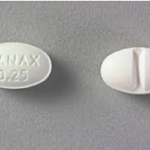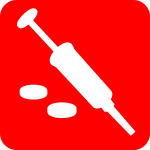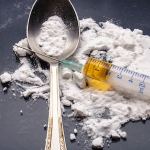“Policymakers embrace the neat, plausible, and wrong explanation for the overdose crisis because it is easier than accepting the inconvenient truth.”
drug overdose
Given the unabated rise in drug overdoses, the idea of safe injection sites has once again been raised. Dr. Jeffrey Singer of the Cato Institute (and also an advisor for ACSH) writes in the Providence Journal about Rhode Island's “overdose prevention sites.” It's all about harm reduction.
The anti-opioid zealots have benzodiazepines, especially Xanax, in their sights. The drug is being demonized by (more or less) the same people who created the fake opioid crisis. But how dangerous is it? It is nearly impossible to kill yourself with Valium, another member of the benzodiazepine class. Does this hold true for Xanax? Yes, more or less.
First fallacy: the mere existence of an opioid pill is why there is a crisis. Finding solutions requires proper identification of a problem. The time is now for the public narrative to follow suit.
Despite widespread national attention, there's no sign that the ongoing drug overdose epidemic is getting better. Meanwhile, the CDC just released two reports, the first of which gave an overview of drug-related mortality rates.
It's relatively easy to accidentally overdose on acetaminophen. The compound is found in headache and cold medicine. When people get sick, they often take a combination of over-the-counter drugs to relieve symptoms. But there may be an option.
There are many good reasons to avoid illegal drugs, like addiction and overdosing. The next best is that local street chemists aren't terribly trustworthy. It's common for drugs to be mixed with other chemicals, some of which are far more dangerous than the drug itself. Case in point: Fentanyl, which is often mixed into heroin.
A new, disturbing report, based on data collected from the CDC's National Center for Health Statistics, shows an increase in the death rates for young Americans over a 15-year period. This has been driven substantially by a shocking increase in the mortality of white women aged 25 to 35.
The overdose epidemic sweeping the nation is hitting some demographics harder than others. Heroin overdose deaths began to skyrocket in 2010. New data shows that of all groups, older millennials, those aged 25-34, are the likeliest to die from a heroin overdose.
The current opioid addiction crisis in the U.S. is both deadly and complex. But the Charlotte Observer wants you to believe that doctors were solely responsible for the death of a young man following a tonsillectomy. The only thing simple in this case is the bias of the newspaper's headline.
There is no doubt that the use and abuse of opioids narcotics related to morphine, oxycodone, hydrocodone, etc. is on the rise. There is also no doubt that the rate of addiction and overdose deaths are also headed upward.
So, what do you do about it? And, does what you re doing make sense?
The American Academy of Neurology (AAN) thinks that it has a solution stringent restrictions in the legal use of narcotic painkiller.
t is no secret that addiction to narcotics (heroin, oxycodone, hydrocodone) has become a growing problem in the US. Of these drugs, heroin is by far the most








